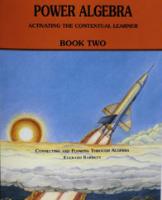| ||||
| Power Algebra Level II | |
| • Sample Lesson (pdf file, opens in new window) |
Click Here to Purchase Level II |
Professor B methodology carefully nurtures children's perception of connection and flow in arithmetic so they experience enjoyment and mastery of math content. To nurture learners' perception of connection and flow, Professor B Algebra integrates Pre-algebra, Algebra I and Algebra II into a single, ungraded curriculum. Each concept is covered thoroughly, with clarity.
The objective of the three Professor B Algebra books is to make it possible for the vast majority of teachers and parents to competently (and rather comfortably) insure their learners' total mastery of elementary and intermediate algebra. You mothers and fathers who never dared to consider it possible to comfortably teach your children algebra, will now be most pleasantly surprised with your ability to mathematically empower them! These textbooks have been carefully written so that the vast majority of adults, regardless of their math backgrounds, can read them and derive all the algebraic meanings we intend. We make the connections crystal clear. Each textbook contains the answers.
Three books cover highschool algebra and can usually be completed in 2 - 3 years, even by children as young as 9 who have completed Prof. B Level 3.
The textbooks can be used as a textbook and student writes answers in a notebook, or can be used as a consumable workbook. (Paperback, 400+ pages each)

Power Algebra Book II
- Addition and Subtraction with Rational Expressions
- Solving Equations and Inequalities – Part I
- Solving Equations and Inequalities – Part II
- Solving Number and Consecutive Number Problems
- Understanding Ratio and Solving Ratio Problems
- Solving Motion Problems
- Solving Coin Problems
- Solving Age Problems
- Solving Digit Problems
- Solving Mixture Problems
- Solving Investment Problems
- Solving Perimeter, Area and Volume Problems
- Solving Work Problems
- Solving Inequality Problems
